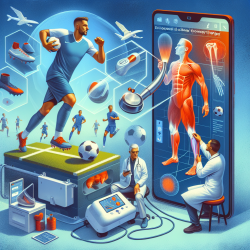Unveiling Novel Subgroups in Autism Spectrum Disorder: What Practitioners Need to Know
As a practitioner in the field of autism spectrum disorder (ASD), staying updated with the latest research is crucial for improving treatment outcomes. A recent study titled Blocking and Binding Folate Receptor Alpha Autoantibodies Identify Novel Autism Spectrum Disorder Subgroups offers groundbreaking insights into ASD subgroups that can significantly enhance your practice.
Understanding Folate Receptor Alpha Autoantibodies (FRAAs)
The study highlights the prevalence of Folate Receptor Alpha Autoantibodies (FRAAs) in children with ASD. These autoantibodies interfere with folate transport across the blood-brain barrier, potentially impacting neurodevelopment. The research identifies two types of FRAAs: blocking and binding, each associated with distinct physiological and behavioral characteristics.
Key Findings and Implications for Practitioners
- Subgroup Identification: The study categorizes children with ASD into subgroups based on the presence of blocking or binding FRAAs. This differentiation is crucial for tailoring treatment strategies.
- Behavioral and Physiological Differences: Children positive for blocking FRAAs exhibit better communication and social skills, as well as improved redox metabolism and inflammation markers compared to those negative for blocking FRAAs.
- Folinic Acid Treatment: The research supports the use of high-dose folinic acid as a targeted treatment for children with FRAAs, particularly those with blocking FRAAs, due to their favorable response in improving ASD symptoms.
Practical Applications and Further Research
For practitioners, these findings underscore the importance of FRAA testing in children with ASD. By identifying FRAA-positive subgroups, you can implement targeted interventions, such as folinic acid supplementation, to potentially enhance treatment efficacy.
Moreover, the study encourages further research into the physiological roles of FRAAs and their impact on ASD. Investigating the interplay between FRAAs and other metabolic pathways could lead to more comprehensive treatment approaches.
Conclusion
This study marks a significant advancement in understanding ASD subgroups and their treatment. By integrating these insights into your practice, you can offer more personalized and effective care to children with ASD.
To read the original research paper, please follow this link: Blocking and Binding Folate Receptor Alpha Autoantibodies Identify Novel Autism Spectrum Disorder Subgroups.










